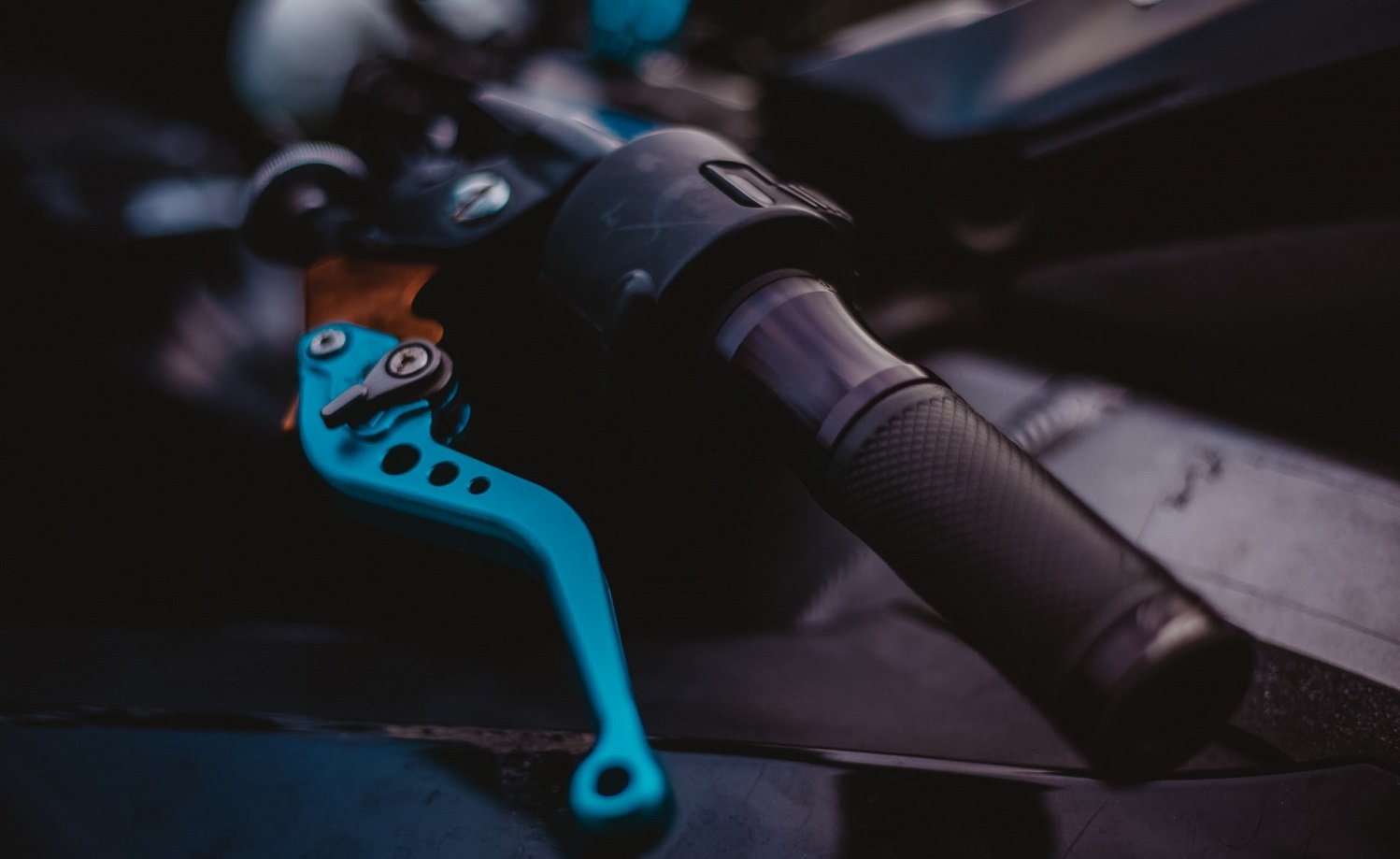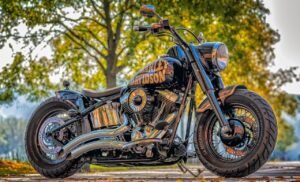How to ride motorcycle with broken clutch cable
Updated on | By Mohit Chauhan

The gearbox and the clutch lever are among the things in the motorcycle that are constantly used while riding. The clutch connects the engine with the gearbox, and when the clutch lever is pulled, two gears are pushed apart. Thus, the gearbox stops providing momentum to the bike’s wheels and the rider is able to shift gears. While changing the gears, especially in traffic where the frequency of gear change increases, the clutch as well as the cable wears a little.
This is quite a common phenomenon and sooner or later every rider has faced the issue of broken clutch cable. If you are lucky enough, you may find a mechanic across the street. But what if it happens to you in the middle of nowhere?
Desperate times desperate measures!
In today’s blog, we will explain how you can ride your motorcycle with a broken clutch. This technique will allow you to reach your nearest service station where you can get it checked.
But before we proceed ahead with our guide, it is important that you understand the working of a clutch in a motorcycle.
Clutch is a mechanism that, with the help of friction, allows you to gradually combine the motion of two shafts that rotate at different speeds. The first shaft is connected to the gearbox, whereas the second shaft is connected to the rear wheel. When you pull the clutch lever, the clutch cable releases the pressure that was being applied on the friction plates. These friction plates then disengage the crankshaft and transmission shaft which allows riders to switch between gears smoothly.
How to ride a motorcycle with a broken clutch?
When you are riding your motorcycle and suddenly realize that the clutch lever is free, it suggests that the clutch cable broke due to excessive wear and tear. Changing the gears without using the clutch is difficult and may lead to rough transmissions. However, in case of emergency, when you are left stranded in a remote area, you can ride your bike without using the clutch by following these procedures.
Upshifting
Step 1: In order to up-shift between gears without using the clutch, you need to listen to the sound of the engine as well as keep a note of the RPM on the dashboard. Generally, an up-shift is ideal when the engine has reached between 2000 and 2500 RPM.
Step 2: Once your RPM has reached this level, release the throttle for around 3-5 seconds and shift the gear up. Releasing the throttle eases the pressure on the transmission which ensures that the gear box is not damaged while you are upshifting.
Note: Up-shifting the gears using this method will ensure minimum jerks to the rear wheel while riding. If you shift too early or too late, there is a possibility that you might stress the transmission system. Apart from taking a note at the RPM, it is necessary to read the signs that the engine usually gives at the time of gear shift.
Step 3: Always up-shift one gear at a time. If you are riding on a second gear, gently increase the throttle so that the revs reaches around 2200 RPM and shift to third gear after releasing the throttle.
An adequate amount of pressure is to be applied while changing the gears. Once the RPM’s are suggesting you to shift the gears, a moderate amount of pressure should be applied by your foot. A high pressure can cause the gears to squeal.
Step 4: Post up-shift, make sure you gently pull the throttle again to maintain a constant speed. In this way you can continue your journey and reach the service station.
Downshifting
You can downshift between gears without using the clutch just like you were upshifting. So when you notice the engine RPM to be around 1000 and 1500, it is ideal to downshift. Similar to upshift, you need to release the throttle at the time of gear change and gently pull the throttle back once you have shifted the gear.
Step 1: Release the throttle gently, once you notice a drop in speed, apply a slight pressure with your left foot to shift one gear down.
Step 2: Maintain an ideal speed and do not go beyond 30 MPH. Also keep a check on the engine sound; you may need to further switch your gears depending on the sound. For example, riding a bike on second gear at high speed increases the engine sound due to high RPM’s, it is best to maintain a constant speed in order to decrease any kind of stress on the transmission system.
Important: If in case the motorcycle stopped while shifting between the gears and you need to put a first gear without using the clutch. Down-shift your bike to neutral and start the engine. Now push it for few meters with the help of your legs to gain some speed. Once your bike is in motion, you can shift to first gear.
What causes motorcycle clutch to break?
Like any other motorcycle part, clutch cable is a perishable element as well and needs to be checked periodically for wear and tear. Ignoring its maintenance may cause the cable to break, and in worse cases, complete clutch system may get damaged. Moreover, there are no deadlines or warranties provided by the manufacturers when it comes to clutch cable and its life is completely dependent on the riding style. However, there are some factors that may result in an early breakage.
The main causes are summarized as follows:
- Excessive rubbing (or slipping) of the clutch disc against the engine flywheel.
- Gears subjected to excessive strain.
- Incorrectly switching between the gears.
Signs of a broken clutch
There are few tells your clutch cable may indicate before breaking completely.
Loose clutch: If the clutch no longer grips properly and has started to loosen up, it is a clear indication that it is no longer connected to the pressure plate. If ignored for a long time, this may further cause your clutch system to fail completely.
Bumpy start: The clutch no longer delivers a smooth ride on the first gear. You may experience a sudden back thrust when you change from neutral to first gear.
Burning smell: If you notice a burning smell around the engine, there is a high possibility that the load is too much for the clutch or the play between the pads is too little.
Rough gear change: Mechanical noises and jerks while changing between the gears are indications that the clutch is no longer disengaging.
Abrupt noise: If you can hear an abrupt noise between gear changes, this is an indication of a defective release bearing.
Tips for riding a motorcycle without clutch
There are few moments as a motorcyclist that may demand extra ordinary skills; the most common among them is riding without a clutch. Although motorcycle clutch is an integral part of your transmission, but in case of an emergency, for example, a broken clutch cable, you should know how it should be done. Failure to use the clutch can be justified in case it is broken or burnt, but should never be done unless absolutely necessary.
Another thing that may seem insignificant, but is absolutely important is ensuring the bike is in neutral before you start the engine. If you start your motorcycle on first gear when the clutch cable is broken, there is a risk of rocket start which may cause accidents.
Shifting gears without a clutch is not easy. Riders need to focus on the sound of the engine as well as the transmission. There is a moment when the gears do not push each other and the motor is inert, this is the perfect time to shift between gears. For example, it is possible to change from the first gear without the aid of the clutch if the second gear is engaged at a speed of 20 km/h at approximately 1500 RPM.
Up-shifting is much easier when compared to downshifting in a motorcycle. This is because while downshifting, it is necessary to bring the engine to a lower RPM which is often difficult while riding at a constant speed. However, this is simple in case of a dirt bike due to its mechanical simplicity.
What are the consequences of riding a motorcycle without clutch?
Motorcycles usually have a sequential transmission gearbox. This means you have to pass through the first, second, and third gear before you can reach the top most gear. These types of transmission are more sensitive compared to four wheelers.
Every time you change between the gears, there is a certain amount of wear that the entire system bears. Doing so without releasing the pressure with the help of clutch cable, will increase the wear even more. If you are doing it correctly, there is no reason to worry; else, you may need to completely replace the clutch system.
Changing between gears without engaging the clutch should only be considered in case of emergency, for instance, when the cable is broken, but even then it makes more sense to tow the bike to your nearest workshop.
Bottom Line
All our recommendations are based on extensive research and experience compiled together with the help of our group leaders and mechanics. To conclude everything we have said, here is the summary;
- Always start your motorcycle in neutral.
- Take a note of RPM before upshifting or downshifting to prevent it from stalling.
- Always release the throttle when switching between the gears.
- In high traffic, the bike will usually stall without clutch. It is best to wait for the traffic to ease before you head for your home.
- Use hand signals to alert the traffic behind you.
- It is best to ride under 30 miles/hour.
- If the nearest service station is less than a mile, it is best to push your bike. It’s good for you and your bike 🙂




